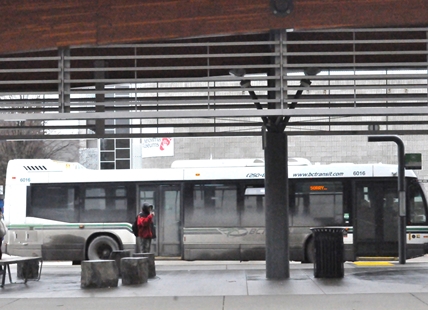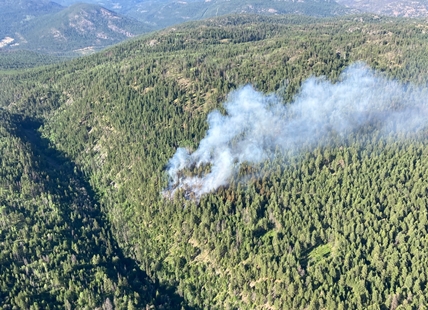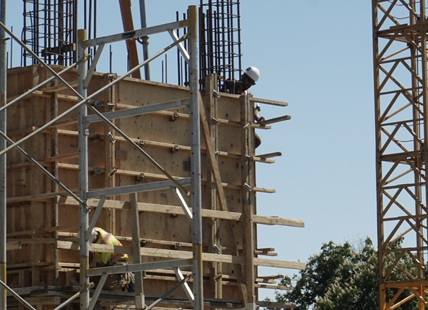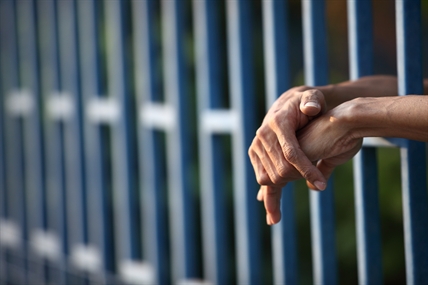Invasive rats are squeaking into new areas, expanding in B.C.
Rats moved into the Okanagan Valley roughly a decade ago and, left unchecked, their populations are continuing to expand into further areas in the province. In the past few years, more rats are being reported in the Shuswap and the Kootenays, and most recently Revelstoke, according...
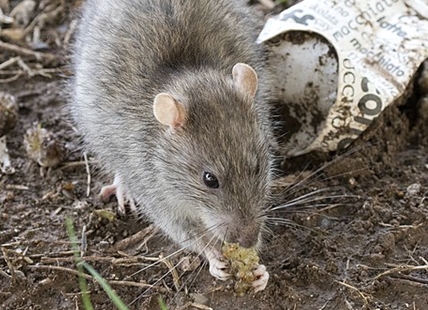
Rats moved into the Okanagan Valley roughly a decade ago and, left unchecked, their populations are continuing to expand into further areas in the province.
In the past few years, more rats are being reported in the Shuswap and the Kootenays, and most recently Revelstoke, according to Orkin Canada’s Matt Wright.
“I can't confirm if they have reached Golden yet, but if they haven't I’m pretty sure they are planning to,” he said.
There are two kinds of rats in the province, the Norway rat and the roof rat. Rats are an invasive species that cause damage to homes and properties, and carry diseases. Their populations are growing fast and so far neither the provincial government nor municipal governments seem to want any part of it.
READ MORE: Everything you wish you didn't need to know about rats in the Thompson-Okanagan
“Like most invasive species, the problem doesn’t go away. We are not going to see their populations decrease unless we work together to get rid of them all very quickly,” said Gail Wallin of the Invasive Species Council of B.C.
She said good habitat, access to lots of good food and lack of natural predators are allowing their populations to keep growing. With most municipalities in the province lacking rat bylaws and policies, she is receiving more reports of rats every year.
When asked if Kamloops has a municipal rat control program in place yet, Councillor Bill Sarai said a plan has not been discussed and is not included in the wildlife management plan.
“The problem is only going to get worse as the weather gets warmer,” he said.
Eventually the rats will have to stop at the Alberta border.
“Alberta has a rat free policy,” Wallin said. “They have an immediate response, they are aggressive on removing rats. I don’t know of any municipalities in this province doing that, it is up to local governments. There is no sense one region doing this, we try a lot to get people together to make a joint decision.”
Wallin said catching and releasing the rodents onto other properties is not a solution. Several municipalities in B.C. have restricted the use of industrial rat poisons because it can cause death to other animals and raptors when they eat the poisoned rats.
“This is very limiting, you are taking away the most effective way to remove the problem,” Wallin said. “Rodenticides are a tool, there is a right time and a right place to properly use any kind of tool.”
READ MORE: If poison isn't the answer, how should the Interior get rid of its rat infestation?
Wright, with Orkin, said his team is restricted with what they are allowed to use on private properties.
“We are forced to use less effective rodenticides on private properties and it is really slowing our progress down,” he said. “We are going to start seeing a spike in numbers pretty quick once the breeding season ramps up.”
Wright said he is seeing steady numbers of rats in the Okanagan Valley across the past several years, and that Kelowna does not have a community plan in place likely because of the high costs involved.
Karen d’Aoust of Kelowna experienced how damaging rats are when she opened her shed last week to find they had overwintered there.
“The shed was destroyed, everything was chewed on and there was poop everywhere,” she said. “They had gone through a giant bag of grass seed, it was a giant mess.”
For unfortunate residents like d’Aoust who have rats moving into sheds and buildings, Wallin said it is important to get rid of the urine.
“The odour of the urine is their communication tool,” she said. “The shed should be bleached. The rule would be to clean up thoroughly behind them, get rid of all damaged materials.”
Other things you can do to prevent rats moving onto your property or in your neighbourhoods is remove food and shelter items close to buildings and foundations, trim and and thin out plantings, remove debris and don’t provide convenient hiding spots close to your house.
In your yard, laneway, carport or balcony, secure garbage and compost, keep people and pet food indoors, and clean up any fallen fruit or spilled birdseed.
If rodents have already entered your home, minimize attractants inside.
Once you have everything packed away, make sure that there's no easy way for rodents to enter your space.
READ MORE: Got rats? The B.C. SPCA has some tips on how to keep them away
For d’Aoust, she is still busy cleaning up the ratty mess.
“I think I'll mask and glove up, spray everything with water and bleach, let it sit, then pull everything out,” she said. “I’ll scrub it all top to bottom, air dry in the sun, and throw out damaged items.”
To contact a reporter for this story, email Shannon Ainslie or call 250-819-6089 or email the editor. You can also submit photos, videos or news tips to the newsroom and be entered to win a monthly prize draw.
We welcome your comments and opinions on our stories but play nice. We won't censor or delete comments unless they contain off-topic statements or links, unnecessary vulgarity, false facts, spam or obviously fake profiles. If you have any concerns about what you see in comments, email the editor in the link above.

 Valandos
Valandos 








